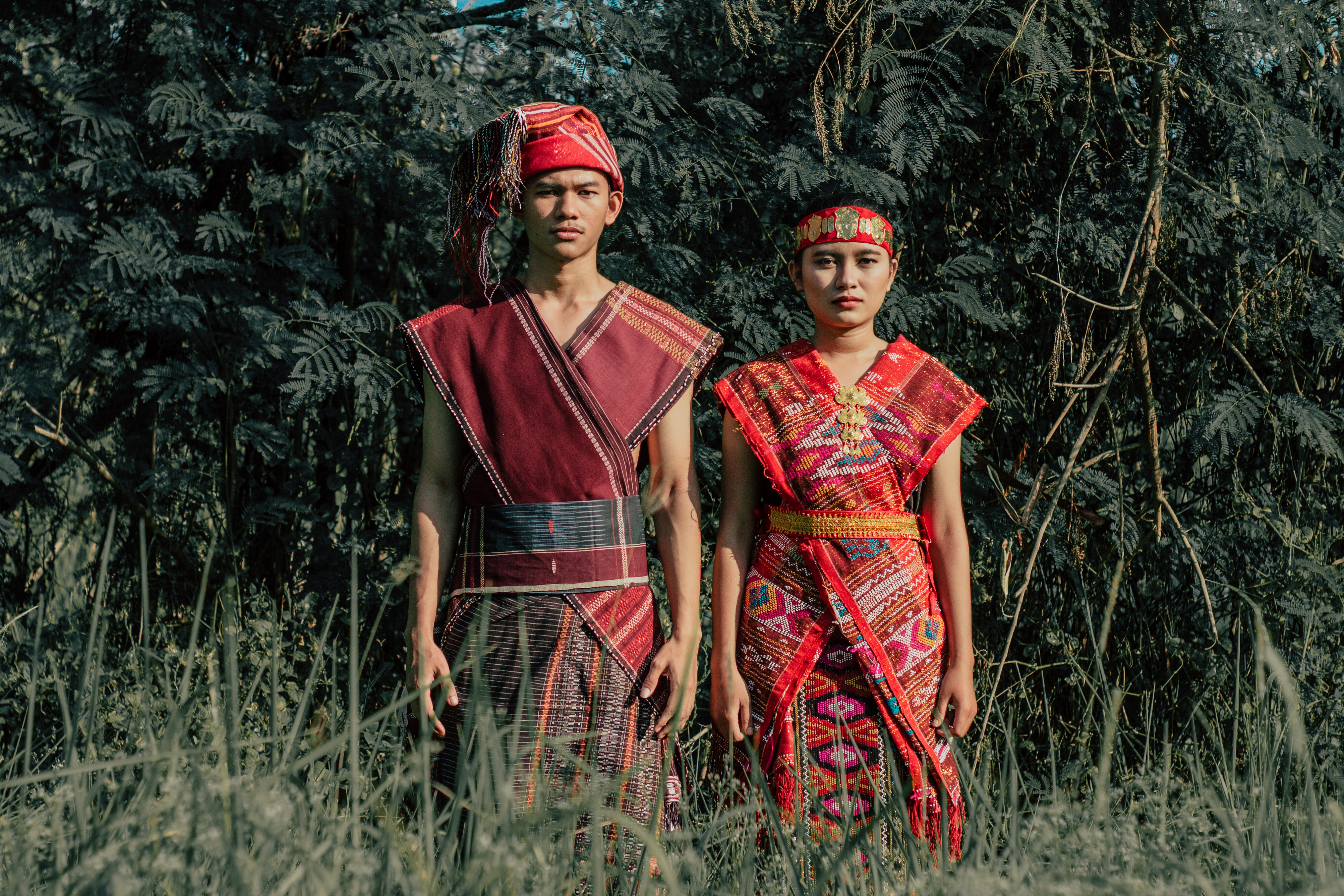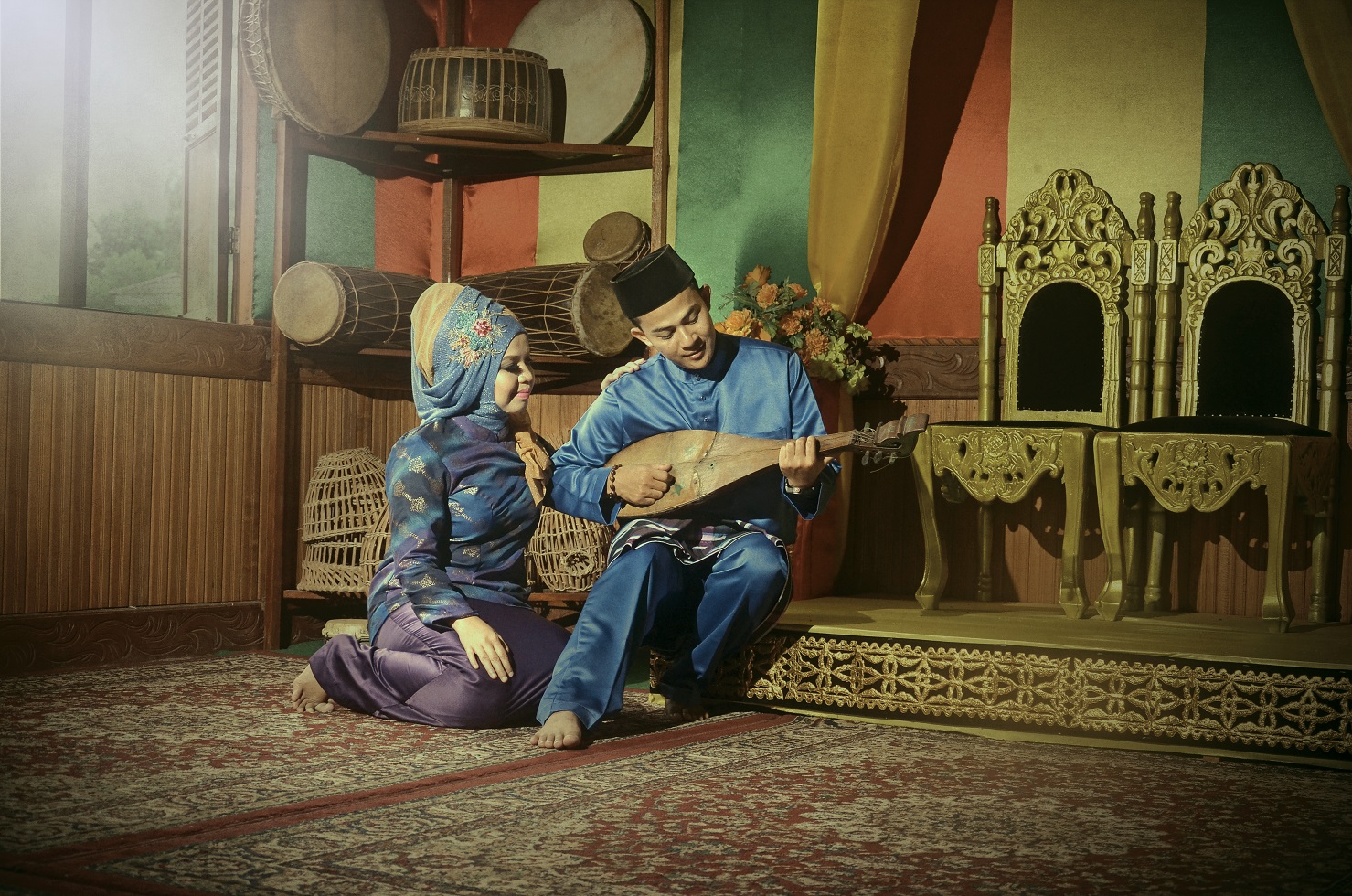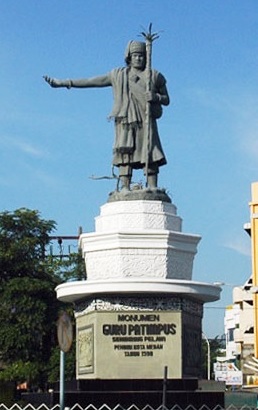|
West Medan
West Medan, (Indonesian: Medan Barat) is one of 21 administrative districts (''kecamatan'') in the city of Medan, North Sumatra, Indonesia. The boundaries of the district: * To the north : Medan Deli * To the south : Medan Petisah, Medan Maimun * To the east : East Medan * To the west : Medan Helvetia, Medan Petisah At the 2010 census, it had a population of 70,771 inhabitants. Total area is 6.14 km2 and the population density in 2010 was 11,526 inhabitants/km2.Biro Pusat Statistik, Jakarta, 2011. Residents The majority of this district population is Chinese, Malay, Batak, Indian, Javanese and Minangkabau. Interesting Place * Kesawan * Tjong A Fie Mansion * Medan City Hall Old Medan City Hall is a building located on Jalan Balai Kota (City Hall Street), Medan, North Sumatra. Description The Old Medan City Hall was built in 1908 during the Dutch colonial period. The building was designed by C. Boon, an architect for ... References {{reflist Districts of ... [...More Info...] [...Related Items...] OR: [Wikipedia] [Google] [Baidu] |
Indonesia Language
Indonesian ( ) is the official and national language of Indonesia. It is a standardized variety of Malay, an Austronesian language that has been used as a lingua franca in the multilingual Indonesian archipelago for centuries. Indonesia is the fourth most populous nation in the world, with over 270 million inhabitants—of which the majority speak Indonesian, which makes it one of the most widely spoken languages in the world.James Neil Sneddon. ''The Indonesian Language: Its History and Role in Modern Society''. UNSW Press, 2004. Most Indonesians, aside from speaking the national language, are fluent in at least one of the more than 700 indigenous local languages; examples include Javanese and Sundanese, which are commonly used at home and within the local community. However, most formal education and nearly all national mass media, governance, administration, and judiciary and other forms of communication are conducted in Indonesian. Under Indonesian rule from 1976 to ... [...More Info...] [...Related Items...] OR: [Wikipedia] [Google] [Baidu] |
Chinese Indonesians
Chinese Indonesians ( id, Orang Tionghoa Indonesia) and colloquially Chindo or just Tionghoa are Indonesians whose ancestors arrived from China at some stage in the last eight centuries. Chinese people and their Indonesian descendants have lived in the Indonesian archipelago since at least the 13th century. Many came initially as sojourners (temporary residents), intending to return home in their old age. Some, however, stayed in the region as economic migrants. Their population grew rapidly during the colonial period when workers were contracted from their home provinces in Southern China. Discrimination against Chinese Indonesians has occurred since the start of Dutch colonialism in the region, although government policies implemented since 1998 have attempted to redress this. Resentment of ethnic Chinese economic aptitude grew in the 1950s as Native Indonesian merchants felt they could not remain competitive. In some cases, government action propagated the stereotype that e ... [...More Info...] [...Related Items...] OR: [Wikipedia] [Google] [Baidu] |
Tjong A Fie Mansion
Tjong A Fie Mansion () is a two-story mansion in Medan, North Sumatra, built by Tjong A Fie (1860–1921) a Hakka merchant who came to own much of the land in Medan through his plantations, later becoming 'Majoor der Chineezen' (leader of the Chinese') in Medan and constructing the Medan-Belawan railway. Tjong A Fie is said to be related to Cheong Fatt Tze, who built the Cheong Fatt Tze Mansion in Penang Penang ( ms, Pulau Pinang, is a Malaysian state located on the northwest coast of Peninsular Malaysia, by the Malacca Strait. It has two parts: Penang Island, where the capital city, George Town, is located, and Seberang Perai on the Malay ..., Malaysia. The building is constructed in Chinese-European-Art Deco style, and was completed in 1900. Although it has been stated in some sources to have been modeled on the Cheong Fatt Tze Mansion in Penang, Malaysia, that mansion was not completed until 1904. External linksOfficial Website [...More Info...] [...Related Items...] OR: [Wikipedia] [Google] [Baidu] |
Kesawan
Kesawan is a district in West Medan, Medan, Indonesia. This region is filled with historic buildings along Jalan Ahmad Yani (Kesawan Street), the oldest street in Medan. Kesawan Square was developed by Iskandar ST. Notable buildings nearby * Deli Park Podomoro City Medan * Nederlandsch Indische Escompto Maatschappij Office * Medan Station * Graha Merah Putih Building * South East Asia Bank Building * Tjong A Fie Mansion * Tip Top Cafe * Capital Building * AVROS Office Building * London Sumatra Building * Bank Indonesia Office Building * Bank Rakyat Indonesia Headquarters * Medan Culture and Tourism Office Building * Warenhuis Building/AMPI Building * Deli Tobacco Hospital * Medan City Hall * Medan Post Office * Titi Gantung Bridge * Bank Modern Building * Analisa Daily Building ( Analisa Daily/Hao Bao Daily) * Hotel JW Marriott Medan * Jakarta Lloyd Building * Inna Dharma Deli Hotel * Merdeka Walk Hawker Centre See also * Chinatowns in Asia * Glodok Glodok () is an ... [...More Info...] [...Related Items...] OR: [Wikipedia] [Google] [Baidu] |
Minangkabau People
Minangkabau people ( min, Urang Minang; Indonesian or Malay: ''Orang Minangkabau'' or ''Minangkabo''; Jawi: منڠكبو), also known as Minang, are an Austronesian ethnic group native to the Minangkabau Highlands of West Sumatra, Indonesia. The Minangkabau's West Sumatran homelands was the seat of the Pagaruyung Kingdom, believed by early historians to have been the cradle of the Malay race, and the location of the Padri War (1821 to 1837). Minangkabau are the ethnic majority in West Sumatra and Negeri Sembilan. Minangkabau are also a recognised minority in other parts of Indonesia as well as Malaysia, Singapore and the Netherlands. Etymology There are several etymology of the term Minangkabau. While the word "kabau" undisputedly translates to "Water Buffalo", the word "minang" is traditionally known as a pinang fruit that people usually chew along the 'Sirih' leaves. But there is also a folklore that mention that term Minangkabau (Minangkabau: ''Minang'' Jawi script: � ... [...More Info...] [...Related Items...] OR: [Wikipedia] [Google] [Baidu] |
Javanese People
The Javanese ( id, Orang Jawa; jv, ꦮꦺꦴꦁꦗꦮ, ''Wong Jawa'' ; , ''Tiyang Jawi'' ) are an ethnic group native to the central and eastern part of the Indonesian island of Java. With approximately 100 million people, Javanese people are the largest ethnic group in Indonesia and the whole Southeast Asia in general. Their native language is Javanese, it is the largest of the Austronesian languages in number of native speakers and also the largest regional language in Southeast Asia. The Javanese as the largest ethnic group in the region have dominated the historical, social, and political landscape in the past as well as in modern Indonesia and Southeast Asia. There are significant numbers of Javanese diaspora outside of central and eastern Java regions, including the other provinces of Indonesia, and also in another countries such as Suriname, Singapore, Malaysia, Egypt, Saudi Arabia, South Africa, Sri Lanka, Yemen and the Netherlands. The Javanese ethnic group h ... [...More Info...] [...Related Items...] OR: [Wikipedia] [Google] [Baidu] |
Indian Indonesian
Indian Indonesians ( id, Orang India Indonesia; ta, இந்திய இந்தோனேசியர்) are Indonesians whose ancestors whose ancestors originally came from the Indian subcontinent. Therefore, this term can be regarded as a blanket term for not only Indonesian Indian proper, but also Indonesians with other South Asian ancestry (e.g. Pakistanis, Bangladeshis etc.). According to the Indian Ministry of External Affairs, there were about 120,000 people of Indian origin as well as 9,000 Indian nationals living and working in Indonesia as of January 2012. Most of them were concentrated in province of North Sumatra and urban areas such as Banda Aceh, Surabaya, Medan and Jakarta. However, it is quite impossible to get correct statistical figures on the Indian Indonesian population, because some of them have merged and assimilated with the indigenous population to become indistinguishable from native Indonesians. History Various people from the Indian subcontine ... [...More Info...] [...Related Items...] OR: [Wikipedia] [Google] [Baidu] |
Batak People
Batak is a collective term used to identify a number of closely related Austronesian peoples, Austronesian ethnic groups predominantly found in North Sumatra, Indonesia, who speak Batak languages. The term is used to include the Karo people (Indonesia), Karo, Pakpak people, Pakpak, Simalungun people, Simalungun, Batak Toba people, Toba, Angkola people, Angkola, and Mandailing people, Mandailing which are related groups with distinct languages and traditional customs (''adat''). Prehistory Linguistic and archaeological evidence indicates that Austronesian peoples, Austronesian speakers first reached Sumatra from Taiwan and the Philippines through Borneo or Java about 2,500 years ago, and the Batak probably descended from these settlers. While the archaeology of southern Sumatra testifies to the existence of neolithic settlers, it seems that the northern part of Sumatra was settled by agriculturalists at a considerably later stage. Although the Batak are often considered to ... [...More Info...] [...Related Items...] OR: [Wikipedia] [Google] [Baidu] |
Malay Indonesian
Malay Indonesians (Malay/Indonesian: Orang Melayu Indonesia; Jawi: اورڠ ملايو ايندونيسيا) are ethnic Malays living throughout Indonesia. They are one of the indigenous peoples of the country. Indonesian, the national language of Indonesia, is a standardized form of Riau Malay.Sneddon 2003, ''The Indonesian Language: Its History and Role in Modern Society'', p. 69–70''Kamus Saku Bahasa Indonesia'', p. 272, PT Mizan Publika, There were numerous kingdoms associated with the Indonesian Malays along with other ethnicities in what is now Indonesia, mainly on the islands of Borneo and Sumatra. These included Srivijaya, the Melayu Kingdom, Dharmasraya, the Sultanate of Deli, the Sultanate of Siak Sri Indrapura, the Riau-Lingga Sultanate, the Sultanate of Bulungan, Pontianak Sultanate, and the Sultanate of Sambas. The 2010 census states that there are 8 million Malays in Indonesia, this number comes from the classification of Malays in East Sumatra and the coast of ... [...More Info...] [...Related Items...] OR: [Wikipedia] [Google] [Baidu] |
Medan Helvetia
Medan (; English: ) is the capital and largest city of the Indonesian province of North Sumatra, as well as a regional hub and financial centre of Sumatra. According to the National Development Planning Agency, Medan is one of the four main central cities of Indonesia, alongside Jakarta, Surabaya, and Makassar. As of the 2020 Census, Medan has a population of 2,435,252 within its city limits,Badan Pusat Statistik, Jakarta, 2021. and over 3.4 million in its built-up urban area, making it the fourth largest urban area in Indonesia. The Medan metropolitan area—which includes neighbouring Binjai, Deli Serdang Regency, and a part of Karo Regency—is the largest metropolitan area outside of Java, with 4,744,323 residents counted in the 2020 Census. Medan is a multicultural metropolis and a busy trading city bordered by the Strait of Malacca, making it one of the major economic cities in Indonesia. A gateway to the western part of Indonesia, Medan is supported by the Port of Belaw ... [...More Info...] [...Related Items...] OR: [Wikipedia] [Google] [Baidu] |
Medan
Medan (; English: ) is the capital and largest city of the Indonesian province of North Sumatra, as well as a regional hub and financial centre of Sumatra. According to the National Development Planning Agency, Medan is one of the four main central cities of Indonesia, alongside Jakarta, Surabaya, and Makassar. As of the 2020 Census, Medan has a population of 2,435,252 within its city limits,Badan Pusat Statistik, Jakarta, 2021. and over 3.4 million in its built-up urban area, making it the fourth largest urban area in Indonesia. The Medan metropolitan area—which includes neighbouring Binjai, Deli Serdang Regency, and a part of Karo Regency—is the largest metropolitan area outside of Java, with 4,744,323 residents counted in the 2020 Census. Medan is a multicultural metropolis and a busy trading city bordered by the Strait of Malacca, making it one of the major economic cities in Indonesia. A gateway to the western part of Indonesia, Medan is supported by the Port of ... [...More Info...] [...Related Items...] OR: [Wikipedia] [Google] [Baidu] |
East Medan
East or Orient is one of the four cardinal directions or points of the compass. It is the opposite direction from west and is the direction from which the Sun rises on the Earth. Etymology As in other languages, the word is formed from the fact that east is the direction where the Sun rises: ''east'' comes from Middle English ''est'', from Old English ''ēast'', which itself comes from the Proto-Germanic *''aus-to-'' or *''austra-'' "east, toward the sunrise", from Proto-Indo-European *aus- "to shine," or " dawn", cognate with Old High German ''*ōstar'' "to the east", Latin ''aurora'' 'dawn', and Greek ''ēōs'' 'dawn, east'. Examples of the same formation in other languages include Latin oriens 'east, sunrise' from orior 'to rise, to originate', Greek ανατολή anatolé 'east' from ἀνατέλλω 'to rise' and Hebrew מִזְרָח mizraḥ 'east' from זָרַח zaraḥ 'to rise, to shine'. '' Ēostre'', a Germanic goddess of dawn, might have been a perso ... [...More Info...] [...Related Items...] OR: [Wikipedia] [Google] [Baidu] |

_en_Tek_Hwa_Seng_bij_Poeloe_Samboe_TMnr_10010680.jpg)






